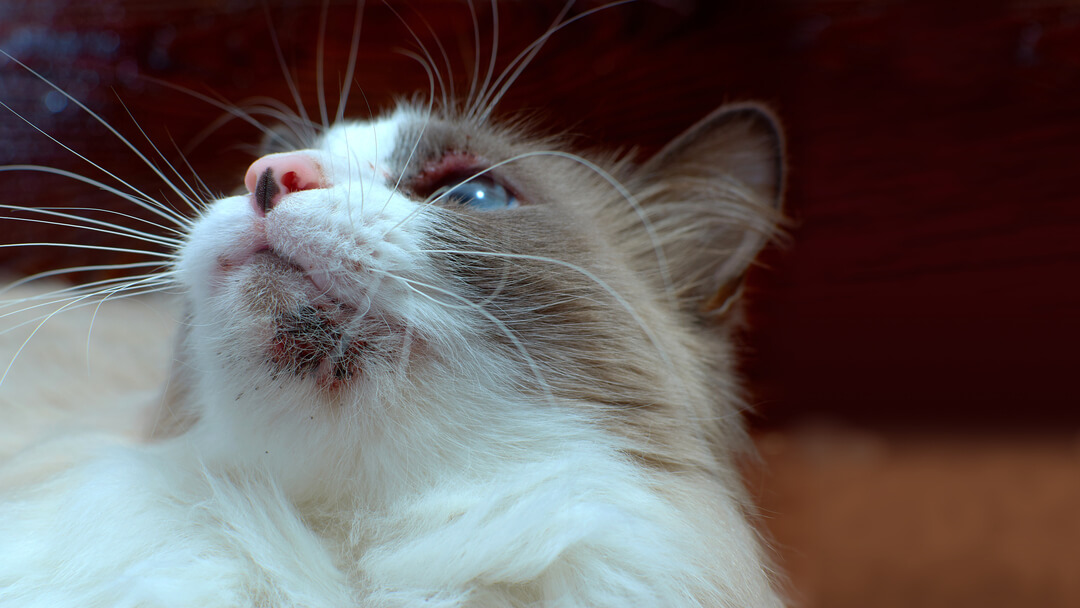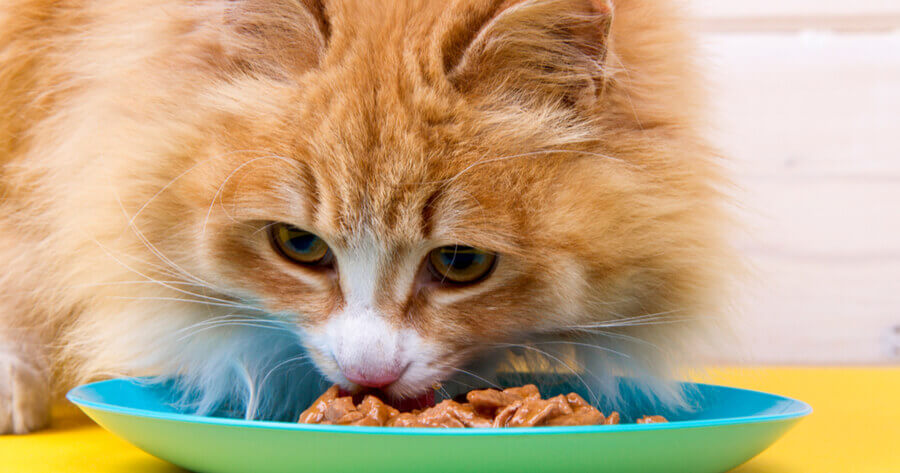
Cats are fussy creatures. They are proud and they demand doting and pampering from their owners. Oftentimes, they become particularly stubborn about their food.
Cats refuse to eat their favourite meal since kitten-hood. Sometimes the reason can be their changing habits or tastes, other times it could be due to sickness or mood.
Consider the health benefits of wet food and compare them to dry food. You need to pay close attention to your cat’s behaviour.
It is important to determine whether your cat is in need of a change in its choice of cuisine; or if there are health risks.
4 Benefits Of Wet Food

1. Wet food gives cats the necessary hydration
We all know our feline fellows are naturally against water; we all know how cranky a wet cat can be! Cats are meant to hunt and get the necessary hydration from their prey. Commercial wet food has at least 60% or more moisture content which is sufficient for the cat.
2. Helps Bowel Movement
Wet foods help regulate a cat’s bowel movements. Cats that suffer from urinary tract infections and constipation should be given wet food.
3. Texture and Odor
Wet food has a meaty texture and strong odour, which appeal to our little furry friends. Stinky-er the food, hungrier the cat. It is also easy for almost all breeds of cats to chew on wet food. You could try Meow Mix Seafood Selections, a popular brand for those looking to feed on a budget.
4. A Complete Nutritious Meal
Dry food or kibble cannot be considered a full meal for an adult cat. A can of wet food has enough nutrients and contents to qualify as a cat’s lunch.
4 Benefits of Dry Food
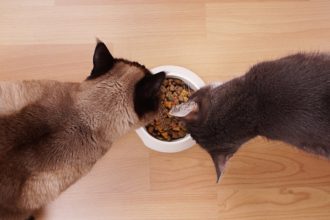
1. Easy on the wallet
Dry food is available in large quantities and is easy to measure. Dry food allows you to measure the amount of food your cat intakes and how much you spend. And kitties love it!
2. Long shelf-life
Dry food is less prone to spoiling and can be left about the house for your cat to snack while you are out. You can keep them in the cupboard for a long time.
3. Crunch helps
The crispy texture of dry food helps keep your feline’s dental health tiptop. The chewing of crunchy treats helps to remove the plaque. For sensitive cats and kittens, Purina Cat Chow Gentle Dry Cat Food is a big favourite.
4. Dryness encourages drinking
The dry treats will provoke your cat to drink more water and will remain hydrated. Proper hydration prevents your kitten from getting urinary tract infections and constipation too.
However, it should be noted that experts advise serving a mixture of alternating wet and dry food.
This ensures your cat stays satisfied with variation and gets all the necessary components to build a healthy diet.
Check for any illness:
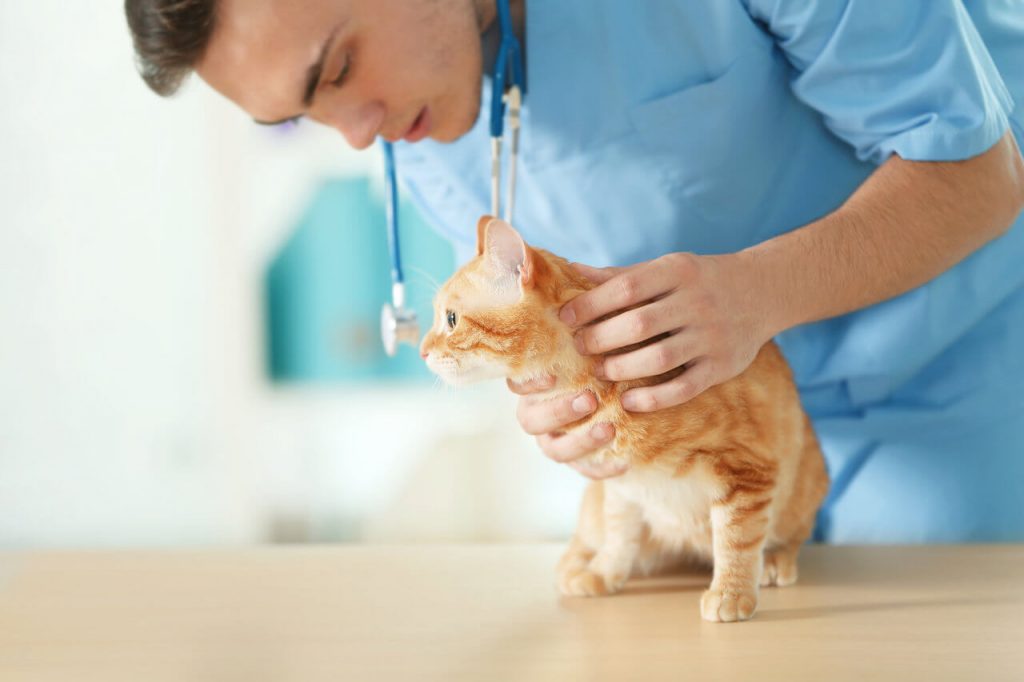
Refusal to eat or distaste for food can be a symptom of sickness or dental problems.
Check your cat’s teeth for sore gums, damaged teeth or dental abscesses; all of which could make eating painful and off-putting.
You should also check all the orifices for any infections or pus buildup. Loss of appetite could also result from pancreatitis, constipation, bowel disease or intestinal failure.
Track your cat’s behaviour and look for signs of distress. If you suspect any of these, it is essential to contact a vet immediately.
Try something new:
My tabby used to eat nothing but “Wellness Complete Health Grain-Free Pate for Kittens”, until one day she decided not to.
I went through cans and cans of wet can food then I switched to dry food. But each time, she would take a bite or two before completely abandoning her bowl. She began to only accept treats of human food every now and then.
With this cat refusing to eat, I became worried. With a fridge and cabinet filled with half-eaten and open packs of treats; I was torn. I started to experiment with mixing them and serving them side to side.
Finally, we settled on “Purina Fancy Feast Creamy Delights” with a side of “Blue Buffalo Adult Dry Cat Food.”
Sometimes your cat can get sick of a certain brand entirely, in which case you will have to experiment with new brands. It is better to choose brands that are vet recommended; nutrition is just as much a priority as taste.
Your cat doesn’t need to be fussy to want a change in its taste buds.
They could get bored with the same flavour every day and a new type may tweak their curiosity. You could start by purchasing a new flavour, maybe two or three cans to test it out.
Measure the portions:
To maintain your cat’s health, it is important to watch their diet. Measure out food portions according to age, weight and health conditions of your cat.
You can consult your vet or google to learn what is a perfectly balanced meal for your best friend.
Take my Bonbon, for instance, he is a seven-and-a-quarter pound of pure orange fluffy hell. I give him about 4-5 cups of dry food in between two meals of wet food; about 9-10 hours apart. Bonbon eats Instinct Original Grain-Free Wet Cat Food twice a day, 5.5oz. Of course, my vet recommended it and you should contact me to find the best option.
Food Bowl:
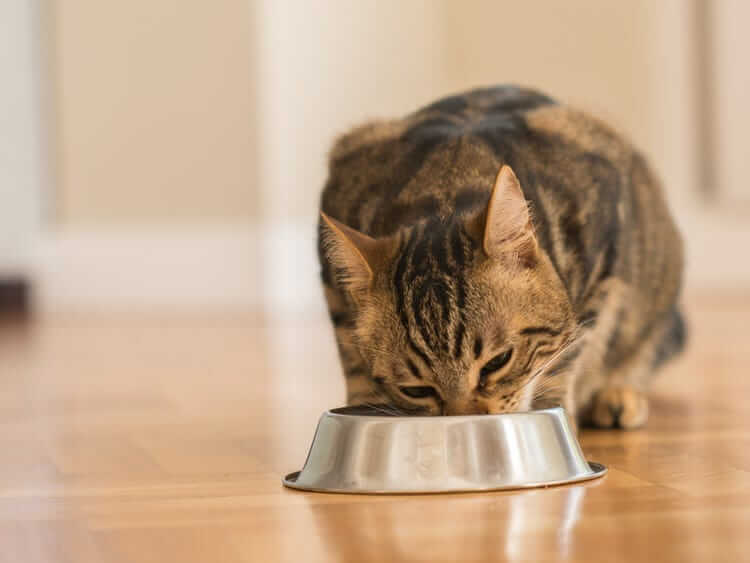
Make sure you keep your cat’s food bowl clean and fresh. Cats are smell sensitive and do not appreciate the rotting smell of day-old food.
Pet food is stinky when it is fresh and absolutely unbearable when old. Make sure to rinse out the food bowl every meal and properly wash it after your little feline friend is done with his last meal of the day.
It is also important to choose the right bowl for the right breed. Firstly, choose a bowl according to the amount; I like to choose them according to how much-wet food I should feed a cat.
A flat face like my Black Persian, Morticia, eats better from bowls that are hollow and large since she eats more.
It allows her to freely eat without having to squish her face.


